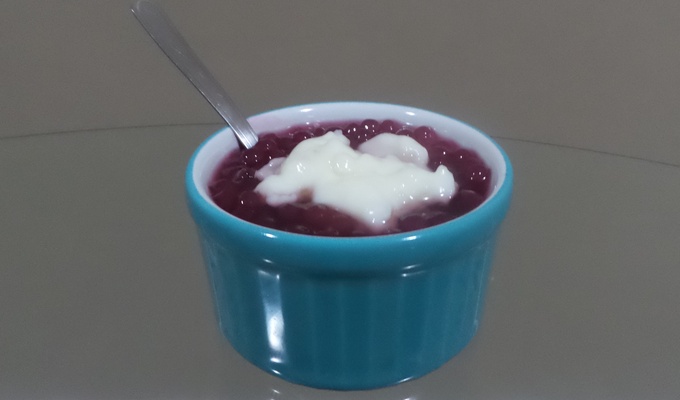Sagu is a southern Brazilian dessert, made with tapioca pearls, sugar and red wine. It is typical of the state of Rio Grande do Sul, but also consumed in Santa Catarina and Paraná.
The tapioca balls were introduced to Latin America from Southeast Asia via the Spanish and Portuguese Empires. In Brazil, tapioca pearls are still known as sagu, despite being made from the native South American cassava, and not sago palms. These pearls are used in this traditional dish, known as sagu de vinho ("wine sago"), or just sagu, created in the Serra Gaúcha region, in the northeastern part of Rio Grande do Sul, but consumed in all the state. It is usually mixed with sugar and red wine and then served warm or cold, with crème anglaise on top of it (sometimes with beaten egg whites with sugar).
In some recipes, wine is mixed with grape juice, with the intent of making the dessert sweeter and less alcoholic. It is also common to infuse the wine with cinnamon and cloves to add flavor to the dish. Although tapioca pearls can be made at home, they are more commonly store-bought.
In this kind of dessert, the tapioca pearls can be also prepared with milk or fruit juice (like orange or pineapple – generally made by people of German descent), instead of red wine, but these variations are quite rare, the wine sagu being the most popular version.
